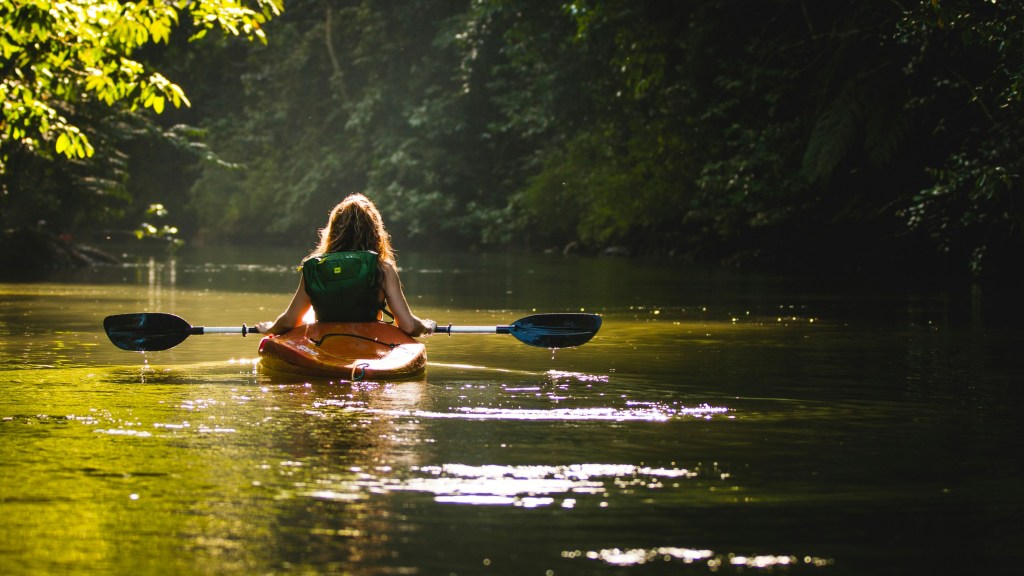This week I had the pleasure of chatting with Hira Shamsuddin, the director of UO’s Outdoor Program (OP), to hear about how inclusivity and community are being integrated to make the outdoors a welcoming space for all. Hira defines her role as “a type of project manager that pushes down barriers for whatever my crew would like to do”. The crew consists of 25 students and four professional staff members including herself, and the pro staff help facilitate the different areas of the OP. Through this collaboration, they are able to make the OP a resource that is helping to dismantle barriers and narratives around who belongs in the outdoor world.
The Spaces
These values of inclusivity and belonging start in the physical spaces they have. The program and resources are housed in two on campus locations: the DIY bike space and the rental barn. These spaces offer students and community members a place to fix their bikes, rent shared gear and purchase equipment at a low cost.
“The rental barn has anything that you could ever imagine that you might need to go camping or be outside. I think most people don’t know about it,” Hira shared “We also just have an amazing selection of gear that is nicer than what you would normally get if you were renting it.”
Both spaces offer a welcoming environment for students to learn, find what they need for a trip and connect with others who share a love for the outdoors. From these spaces, we now move to adventures and trips.
The Adventures
Another central component of what makes the OP so helpful to getting students outside is through their trips. Often student led, these trips can span multiple days, states and climates.
“Student employees and leaders lead day outings and events, and then we also have the common adventure piece which is different,” Hira explained. “A Common Adventure means that students come and take a trip initiator clinic with us, become van certified, and then they are allowed to propose trips.”
These trips encourage a student outdoor community because they are run by and for the students. Previous experience is needed for the leader, as the student proposing the trip needs to be familiar with the activity they propose and facilitate. However, participants on the common adventure don’t need to have prior experience but do need to understand what they’re signing up for. Because they’re structured this way, they are also incredibly affordable for those involved. Cars aren’t needed, they can use UO-owned vans, and each student participating only needs to pay a portion as the money is pooled.
Outside of these larger adventures, the OP budgets $10,000 of its yearly funds (and wants to budget more!) to organize affinity groups for those that have historically been marginalized and excluded from outdoor spaces. Out of this, the program “redefining outdoorsy” was born.
“So, when it was started, it was kind of this big summit that would happen once a year…but this was what started pushing us to improve outdoor access for everyone instead of just the groups that normally access the outdoors,” she said.
A few examples of this are the upcoming Native American Student Union trip to Crater Lake, a BIPOC learn to ski outing and the Femme-presenting/Trans Women’s bike school. Over the current term (Winter of 2024) they had nine BIPOC-specific led outings. Aside from specific trips, the bike repair space recently started carrying wheelchair tires and tools to fix wheelchairs.
Communication Strategy
Communication positions are also held by student employees and overseen by professional staff. Since their target audience is students, they focus efforts on social media, such as Instagram, and a weekly email newsletter to get information out. Information is also available on their website, but Hira says that the main reason students know about events is through the Instagram page. Inclusive strategies within this account include highlighting affinity outings and resources, marking trips with levels of difficulty and visually showing that they value outdoor diversity.


The Partnerships
Aside from student and on-campus specific programing, the OP also partners with community programs. Their biggest two partnerships are Banff, which is a film festival encompassing outdoor community partners such as Elevation, Oregon Paddle Sports and Shift Community Cycles.
“It’s one of our biggest outreaches to the community, and it’s really where we get to plug our rentals and resources for the community as well,” she noted.
They also partner with the Hilyard Community Center to provide accessible and adaptive bikes, and with Oregon Adaptive Sports. These partnerships support trips specifically for those with disabilities, such as going to the mountains to try adaptive skiing. Other community events include avalanche safety awareness and river rescue clinics.
“Sky is the limit for us. And as long as we have students who are willing to help and lead, we can do a lot,” she concluded.
The UO Outdoor Program is a wonderful example of how outdoor organizations can cultivate and incorporate inclusive values to help change narratives of who belongs in the outdoor community. And through their support, students and community members are getting outside and into nature in ways that previously haven’t been possible.
